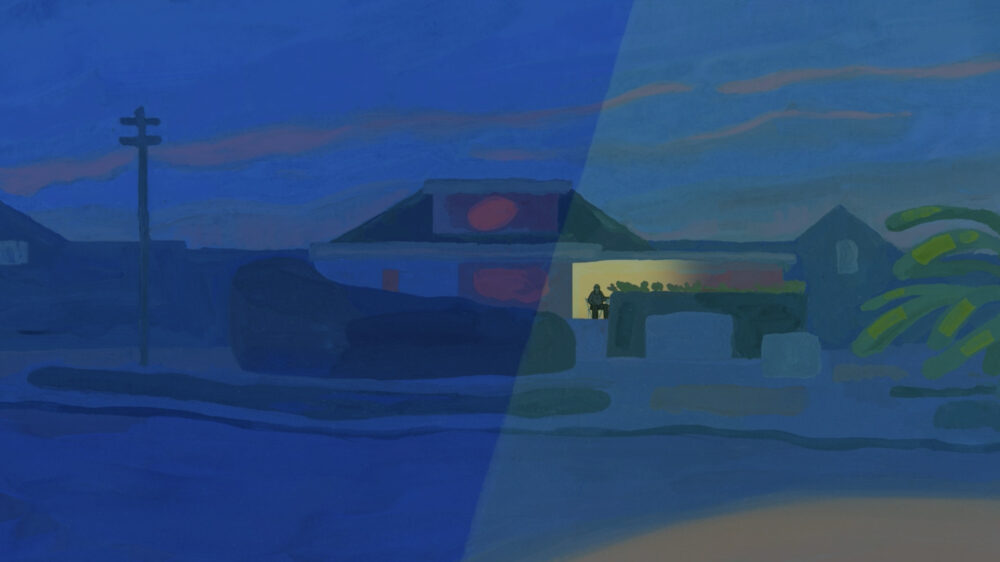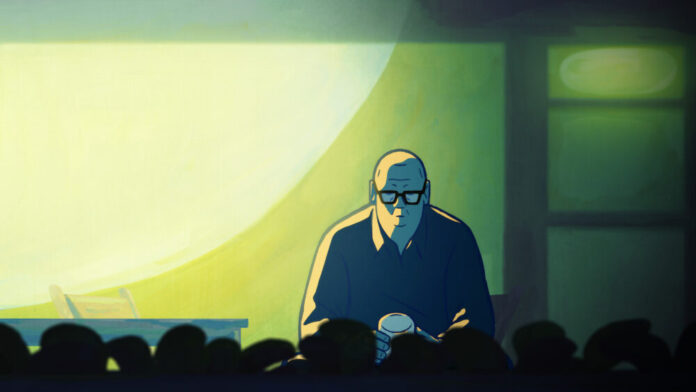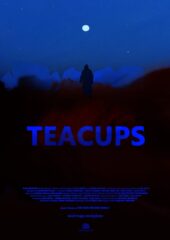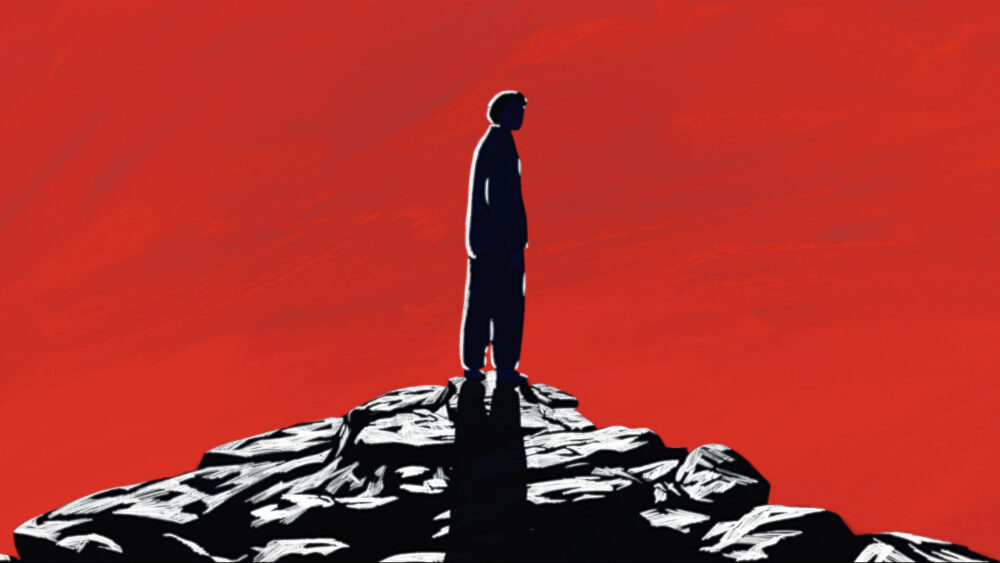The new Australian-Irish short Teacups tells the true story of Don Ritchie, a man who would approach people contemplating suicide at the edge of a cliff, about 100 feet from his home and try to convince them to change their minds. Directed by Alec Green and Finbar Watson, the short features the voice of acclaimed actor Hugo Weaving as Ritchie, a man who has had numerous interactions with hundreds of suicidal individuals. (A recent Instagram post about Ritchie’s efforts has received over 700,000 likes.)
We had a chance to chat with Green and Watson about their animated film, which won the Best in Show at the Spark Animation Festival and has qualified to be considered for the Oscar shortlist.

Animation Magazine: Congrats on the success of your short. Can you tell us how this short came to be?
Alec Green: Finbar and I were 20 at the time; we’d just sold our first project to The Guardian and we were ecstatic. Sure enough, it only took a week before that excitement warped into anxiety about what project we could pursue next. Around the same time, a close friend, Jonas, told us about Don. Finbar and I had both grown up relatively close to the cliffs, yet neither of us were aware of Don’s work. Stories like Don’s have the potential to effect positive change on an immense scale, it seemed unbelievable that there was so little out there about him. We wanted to change this.
What was it about this story that inspired you to develop an animated short based on it?
Alec: It was a combination of subject matter and story scale. Frequently, films sensationalize mental health and suicide for the purpose of shock value. Animation gave us a canvas to explore Don’s story with nuance, providing subtlety and suggestion to scenes in place of harsh, explicit realism. In our scripting, Finbar and I wrote story beats that spanned 60 years of Don’s life. Animation as a medium lent itself perfectly to this type of scale; Alan Holly, Teacups’ animation/art director, did an incredible job creating sequences that seamlessly weaved in and out of time periods.
When did Hugo Weaving get involved?
Alec: Finbar and I had been sitting on the script for a few months when Hugo got involved. It was totally surreal; it hadn’t sunk in for either of us until we were there in the room with him. We spent the following months blasting “Clubbed to Death” from The Matrix in every car ride. Hugo’s voice performance as Don is unreal; the balance of gravity and warmth and layers of guilt and catharsis. It’s mind-boggling, we’re eternally grateful.

How long did it take to make and which animation tools were used?
Alec: Including scripting and financing, this was a project two-and-a-half years in the making. Teacups features hand-drawn digital animation from Mikai Geronimo, Josh O’Caoimh, Rory Byrne and Alan Holly. All backgrounds were painted in gouache by Muireann Mills, and effect animation was drawn in pencil by Deither Kirby Jay.
Looking back, what would you say were your biggest challenges?
Finbar: Neither Alec nor I had worked on a production of this scale before. Based in Sydney, Australia, we were collaborating with people from Ireland and America. Although intimidating, it is exciting to look down the barrel of a 10-month-long production and figure it out as you go. On a more boring note, as with all short films, financing was difficult. We were balancing day jobs with production, with our weekly pay going directly into the film. Although it was tiresome, it was actually really enjoyable, and we would look forward to most weeknight calls with our team. There were also various challenges along the way about how to show a scene best, but luckily, we were working with excellent collaborators, and it was always a gratifying process.
Can you talk about the visual style of the short?
Finbar: Alec and I were huge admirers of ‘and maps and plans’ [studio] before we worked with them. In particular, their understanding of story and how it should manifest emotionally through symbols, colors and abstract imagery appealed to us greatly.
As we worked through the scenes and considered their purposes, Alec and I found inspiration from a variety of places but always kept in mind that animation allows for unique expressions. For instance, in The Tale of the Princess Kaguya the animation style devolves to frenzied lines to show a character’s state of mind. In a similar way, our use of color shifted from deep blues to boiling reds, revealing characters’ headspaces. Broadly speaking, every shot was inspired, whether from a character’s movement in Good Will Hunting or the lighting in a freediving YouTube video.
What did you find challenging about this story?
Finbar: Don Ritchie stopped hundreds of people from dying by suicide for half a century; he also sold insurance and served in the Navy in WWII. From a writing perspective, there was a difficulty in not being overwhelmed with all the information we had on Don and then compacting that information into seven-and-a-half minutes. As such, our focus was firmly set on the emotion of Don’s story and an idea that grounded the story: a simple act of kindness can save a life. All the information we had was then filtered through that focus and idea. This had a two-fold effect. Firstly, we had structure, and secondly, we could tell Don’s story in a way that wasn’t just a factual retelling of his life.
What were the biggest lessons you learned in the process?
Finbar: As we have mentioned, we did copious amounts of research about Don, the people he helped and his legacy. Facts that may seem irrelevant at the time can suddenly become the key to solving a problem or exploring a scene in an interesting way. Research, research, research is a mantra we now say when beginning new projects. Working with an excellent team is critical. From Hugo to our producers, and maps and plans, sound designers and composers, there was no weak link. Everyone was deeply involved, posing ideas, questions and solutions. Finding that type of team where collaboration becomes highly effective is integral to creating a polished film.
What do you hope audiences will take away from your short?
Finbar: Our goal with Teacups was always to have Don’s story heard and remembered by as many people as possible. With mental illnesses becoming increasingly pervasive in society, conversations about these issues must be normalized. For instance, in America, nearly 50,000 people die by suicide every year. Don’s quiet gestures, offering tea and a place to talk, changed not only the lives of those who stepped back from the cliff’s edge but also the lives of thousands of family members and friends of those people. We hope Teacups plays a small role in keeping that legacy alive and encouraging people to reach out.
Teacups is now available to watch on YouTube, Vimeo and the Academy Screening Room. Visit the official website for more information: andmapsandplans.com/teacups.








